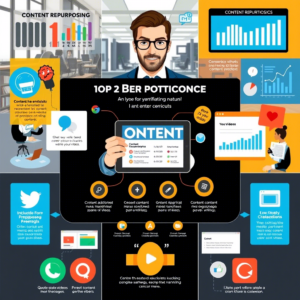Imagine scrolling through your Twitter feed and stumbling upon a thread that stops you in your tracks. It’s witty, informative, and sparks curiosity.
Before you know it, you’re reading every single tweet, replying to comments, and even sharing it with your network. This is the power of a well-crafted Twitter thread—a tool that can transform casual browsing into meaningful engagement.
Twitter threads are more than just a series of tweets; they’re a storytelling medium that connects ideas, opinions, and audiences in real time.
Whether you’re a marketer, a writer, or someone with a passion to share, mastering the art of creating engaging threads can boost your visibility, build communities, and turn passive followers into active participants.
In this article, we’ll break down actionable strategies to craft threads that captivate, inform, and inspire conversations. From understanding your audience to leveraging interactivity, you’ll walk away with the tools to turn your next thread into a viral-worthy dialogue.
1: Know Your Audience—The Foundation of Effective Threads
Why It Matters
Before you draft a single tweet, ask yourself: Who am I speaking to? Understanding your audience’s interests, pain points, and preferences is the first step in creating content that resonates.
Practical Tips
- Research Trends: Use Twitter’s search bar or tools like TweetDeck to identify popular topics in your niche. For example, if you’re a tech blogger, monitor hashtags like #FutureTech or #AIInnovation.
- Analyze Engagement: Look at threads that already perform well. What do they have in common? Short paragraphs? Polls? Visuals?
- Segment Your Audience: Are you targeting professionals, hobbyists, or general audiences? Tailor your language and examples accordingly.
Example
A nutritionist aiming to engage busy parents might focus on quick, actionable tips instead of complex scientific data. By simplifying content and using relatable scenarios (“How to pack a school lunch in 5 minutes”), they increase relatability.
Data-Driven Insight
According to a 2023 Twitter study, threads that address audience-specific needs receive 2x more engagement than generic posts.
2: Structure for Impact—Craft a Thread That Flows
The Anatomy of a Great Thread
A thread isn’t just a list of tweets; it’s a narrative. Structure it like a story with a beginning, middle, and end.
Key Elements
- Headline Tweet: Hook readers immediately. Ask a question, share a surprising fact, or state a bold opinion.
- Example: “Ever wondered how TikTok algorithms work? Here’s the truth behind the trends.”
- Chunked Content: Break ideas into digestible parts. Avoid walls of text—use line breaks or emojis to separate sections.
- Call to Action (CTA): End with a prompt for engagement. Ask followers to share their thoughts, vote in a poll, or tag someone.
Pro Tip
Use thread tools like Threader.app or Twine to draft and preview your thread before posting.
3: Spark Curiosity—Leverage Storytelling and Humor
Why Storytelling Works
Humans are wired to remember stories. By framing your thread around a narrative—whether personal, educational, or hypothetical—you make information memorable.
Strategies to Try
- Start with a Hook: “I once lost $5,000 because of a Twitter thread. Here’s what I learned.”
- Use Analogies: Compare complex ideas to everyday experiences. (“Blockchain is like a digital ledger—imagine a shared Google Doc that no one can delete.”)
- Inject Humor: A well-timed joke or meme can lighten the tone and make your thread shareable.
Case Study
The viral thread by @WaitButWhy on “The AI Revolution” used simple analogies and humor to explain cutting-edge tech, amassing over 100k retweets.
Transition:
While storytelling captivates, sustaining engagement requires more than just a good start—consistency and interactivity are key.
4: Foster Dialogue—Encourage Participation
Beyond Monologue to Dialogue
The best threads don’t just inform—they invite conversation. Here’s how to turn passive readers into active participants:
Tactics for Interaction
- Ask Questions: “What’s your biggest challenge with remote work?”
- Polls and Quizzes: Use Twitter’s voting feature to gather opinions.
- Reply to Comments: Engage with followers’ replies to build rapport.
Example
A brand like @Starbucks might post a thread asking fans to vote on a new drink flavor, then highlight the winning option in a future post.
Bonus Tip
Tag relevant accounts or communities to expand your thread’s reach.
5: Iterate and Adapt—Learn from Your Threads
Measure Success
Track metrics like likes, retweets, replies, and follower growth to gauge a thread’s impact. Tools like Twitter Analytics or third-party platforms like Sprout Social can help.
Iterate Based on Feedback
- If a thread underperforms, analyze why: Was the topic too niche? Was the structure confusing?
- Test formats: Try shorter threads for quick tips or longer ones for deep dives.
Pro Insight
A/B testing different CTAs or headlines can reveal what resonates most with your audience.
Conclusion
Creating engaging Twitter threads is an art form that blends strategy, storytelling, and interactivity. By knowing your audience, structuring content for clarity, weaving in humor, and inviting dialogue, you can turn a series of tweets into a dynamic conversation. Remember, the goal isn’t just to post—it’s to connect.
Your Turn:
Ready to start your next thread? Begin with a single question or idea, and let the conversation unfold. Share this article with a fellow creator, or drop a comment below with your favorite thread example. Let’s keep the dialogue going!




